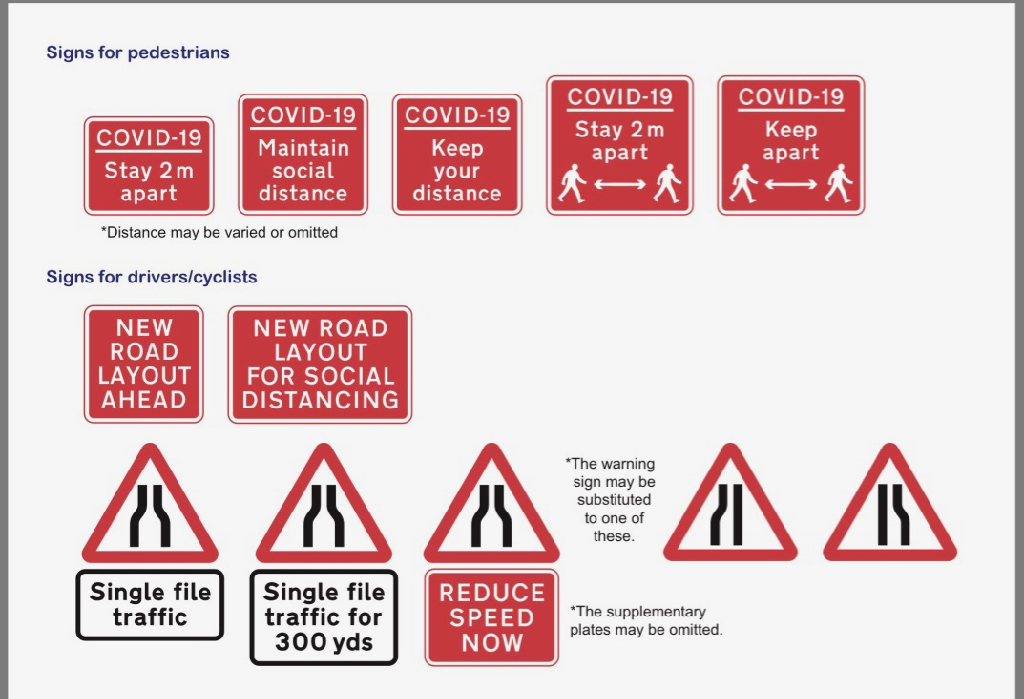We are developing the social individualist meta-context for the future. From the very serious to the extremely frivolous... lets see what is on the mind of the Samizdata people.
Samizdata, derived from Samizdat /n. - a system of clandestine publication of banned literature in the USSR [Russ.,= self-publishing house]
|
Citizens for Financial Justice have a new article out!
Who are they? You mean you don’t know?
Citizens for Financial Justice is a diverse group of European partners – from local grassroots groups to large international organisations. Together, we aim to inform and connect citizens to act together to make the global financial system work better for everyone.
We are funded by the European Union and aim to support the implementation of the Sustainable development Goals (sDGs) by mobilising EU citizens to support effective financing for development (FfD).
A cosy arrangement. Thank God the UK is out of it. Here is the article:
World Hepatitis Day: How Gilead Science Profits from Hepatitis Deaths
Alternative title #1: How Gilead Science Profits from Ending Hepatitis Deaths
Alternative title #2: How the Profit Motive Led Gilead Science to Find a Cure for Hepatitis C
Guys, my apologies. I have to do some work – work work, can you believe that? – so when I remembered that I had already written a post that said what I wanted to say about about this lethal idiocy, I decided simply to post it again. It is seventeen years old. It does not require updating.
Life is still tough for the owners of lazy slaves
An extract:
Now, just possibly you the reader aren’t very sympathetic. Just possibly you opine that the slaveowners had only themselves to blame – “Well, of course,” you are saying, “it’s no surprise that if people are forced to work for nothing then they don’t bust a gut.”
So why do so many people expect these familiar laws of human behaviour to suddenly change when the time is now and the work to be done is AIDS research?
In this link Stephen Pollard quotes Roger Bate, writing in the Wall Street Journal, as saying that AIDS drug development is trending downwards.
Why the decline?
Because the drugs companies no longer believe that they are going to get rich out of AIDS research. In fact they begin to doubt they will get any compensation at all. They read the newspapers, they study the speeches of politicians, and they sense that the popular wind is blowing against them. They think, probably rightly, that governments will either force them to sell at a loss drugs that were developed at huge expense or will bypass them and the law entirely by buying generic copies of patent drugs. Governments, after all, are the ones who can change the law when it is inconvenient. One minute the authorities will come down like a ton of bricks on pirate music or pirate videos. The next minute they will say that it is ‘unacceptable greed’ for companies to actually want to profit from patents on medical discoveries. I accept that there are subtleties and genuine conflicts of principle in the field of intellectual property – but the bottom line is that if pharma companies get nothing but abuse for the work they put in they bloody well won’t put in much more of it. Just as for the slaves, it’s no surprise that if people are forced to work for nothing then they don’t bust a gut.
SAGE minutes make it clear that the public was explicitly petrified in order to ensure compliance with lockdown. Mind-control is objectionable in itself, but has a real cost in lives: before a policy lever like lockdown was pulled, where was the cost/benefit analysis, or was SAGE only thinking of covid-19? Lockdown, after all, affects not just this thing over here (covid-19) but also that thing over there (cancer, cardiac, sepsis, etc.).
Through lockdown, A&E cardiac admissions have been as much as 50% down, so around 5,000 people per month have not been turning up at hospital with heart attack symptoms; heart attacks outside hospital have only a 1-in-10 chance of survival. Same story with strokes. And downstream, many cancers are touch-and-go even if you catch them early; give them a two month head-start and Stanford’s Professor Bhattacharya estimates the impact of urgent cancer referrals running 70% below normal levels will be around 18,000 deaths.
– Alistair Haimes
To be fair: I don’t eat food. Food here is so unsafe I decided years ago to subsist only on internet memes.
– Perry Metzger, in response to this breathtaking absurdity.
Amrou Al-Kadhi writing in the Independent:
What the white supremacist roots of biological sex reveal about today’s transphobic feminism
Thomas Chatterton Williams writing in the Guardian:
We often accuse the right of distorting science. But the left changed the coronavirus narrative overnight
Edit 11 June: The Independent, perhaps stung by mockery in the readers’ comments, has changed the headline of the article by Amrou Al-Kadhi to “How Britain’s colonial past can be traced through to the transphobic feminism of today”.
That leads me to muse on what the Guardian has lost by the decision of its editor, Katharine Viner, to guard its writers from abuse by not permitting its readers to debate those of its articles they are most likely to want to debate. The Independent was able to see that the original headline to the Amrou Al-Kadhi article was not going down well even among its notably “progressive” readers. The Guardian can see from the number of clicks and shares that the Thomas Chatterton Williams article is getting a reaction – but what? I think it is favourable. I see comments from left wingers who are relieved to hear someone finally articulate their sense of unease and embarrassment at the speed with which the “party line” on social distancing was reversed. But that’s going by the comments of the writers I read and the websites I visit. The Guardian is no less hampered than I am.
Given the irrational and potentially violent, dangerous, and lethal behaviour of an Excited Delirium Syndrome subject, any law enforcement officer interaction with a person in this situation risks significant injury or death to either the officer or the subject who has a potentially lethal medical syndrome. This already challenging situation has the potential for intense public scrutiny coupled with the expectation of a perfect outcome. Anything less creates a situation of potential public outrage. Unfortunately, this dangerous medical situation makes perfect outcomes difficult in many circumstances.
– White Paper Report on Excited Delirium Syndrome, issued by the American College of Emergency Physicians, September 10th 2009
Ya think?!
When we get to see the bodycam videos of the police officers, we’ll know whether George Floyd had Excited Delirium Syndrome. Had the officers switched off their cams beforehand, that absence (like Hillary Clinton’s missing emails) would speak volumes. If the cams show a calm Mr Floyd ready to be put in a police car, then the officers’ defence of excited delirium will be tossed with contempt. As we’ve heard nothing about the cams from the media, they may not support the narrative.
– in the video we have been allowed to see, a panicking Mr Floyd says he can’t breathe – showing that he can breathe but it’s not doing him much good. Despite his being able to breathe, and so speak, his organs are begging for oxygen they’re increasingly not getting. That fits final-stage Excited Delirium Syndrome.
– His autopsy showed fentanyl and methamphetamine. That drug cocktail is good for giving yourself Excited Delirium Syndrome, especially when it is far from your first time.
I hope we get to find out at the trial, if not before. Till then, if anyone tries to make you swallow the media’s narrative whole, add a pinch of salt.
Meanwhile, this grim subject at least raises a grimly amusing question: are the politically correct experiencing a kind of excited delirium syndrome? Some common symptoms are very much present, especially in the rioters:
remorse… and understanding of surroundings … are absent in such subjects. … subjects are known to be irrational, often violent … delirium and agitation … destructive or bizarre behavior generating calls to police … ongoing struggle despite futility … Subjects are incoherent and combative … delusional, paranoid
Not yet observed in the rioters (AFAIK) are
unusual physical strength and stamina
nor
Impervious to pain
(unless it’s the pain of others), and I don’t think we’ve yet had a chance to observe whether the rioters would show
Significant resistance to physical restraint
or an absence of “normal fear and … rational thoughts for safety”, as there has not been much physical restraint, let alone cause for the rioters to feel afraid. Since we are clearly in the early “sudden onset” stage of “violence and hyperactivity”, it is no surprise we have not yet seen any symptoms from the syndrome’s late stage:
“sudden cessation of struggle, respiratory arrest and death.” (The Western Journal of Emergency Medicine, 2010)
If we make the diagnosis, how should we treat excited delirium in the politically correct?
the specific physical control methods employed should optimally minimize the time spent struggling, while safely achieving physical control. The use of multiple personnel with training in safe physical control measures is encouraged. … research is needed to establish field protocols and techniques that allow police, emergency medical services and hospital personnel to interact with these agitated, aggressive patients in a manner safe both for the patients and the providers.
I share the writers’ desire for safety all round, but while this research on how to achieve it proceeds, I refer readers to the top-of-post quote: these perfect outcomes are ‘difficult’ – and these US physicians seem to have perfected the art of English understatement. (I assume this belief – that achieving swift safe control is essential, to end the subject’s wild agitated activity that is speeding his own death – is part of why the elected Minneapolis authorities teach their police to use knee-to-neck-hold as department policy.)
A less technical summary seems to be saying the same thing.
Deescalation does not have a high likelihood of changing outcomes significantly …
The subjects require physical restraint (this is because if they continue to struggle it accelerates the death) …
Once the decision to do this has been made, action needs to be swift and efficient …
I feel sure this is the treatment the rioters need. Whether it would have been (or indeed was) also the right (albeit, sadly, too late) treatment for Mr Floyd is something the bodycam videos will tell us.
—-
(In the above quotes, I have expanded ‘ExDS’ to ‘Excited Delirium Syndrome’, ‘LEO’ to ‘law enforcement officer’ or just ‘officer’, and ‘EMS’ to ’emergency medical services’, for ease of reading.)
Please stop adding fact Trump mentioned it to every article about hydroxychloroquine, making clinical efficacy a political issue is monstrous. Some people want it not to work.
– Perry de Havilland
In the Guardian James Heathers, a research scientist, asks,
“The Lancet has made one of the biggest retractions in modern history. How could this happen?”
The Lancet is one of the oldest and most respected medical journals in the world. Recently, they published an article on Covid patients receiving hydroxychloroquine with a dire conclusion: the drug increases heartbeat irregularities and decreases hospital survival rates. This result was treated as authoritative, and major drug trials were immediately halted – because why treat anyone with an unsafe drug?
Now, that Lancet study has been retracted, withdrawn from the literature entirely, at the request of three of its authors who “can no longer vouch for the veracity of the primary data sources”. Given the seriousness of the topic and the consequences of the paper, this is one of the most consequential retractions in modern history.
It is natural to ask how this is possible. How did a paper of such consequence get discarded like a used tissue by some of its authors only days after publication? If the authors don’t trust it now, how did it get published in the first place?
The answer is quite simple. It happened because peer review, the formal process of reviewing scientific work before it is accepted for publication, is not designed to detect anomalous data. It makes no difference if the anomalies are due to inaccuracies, miscalculations, or outright fraud. This is not what peer review is for. While it is the internationally recognised badge of “settled science”, its value is far more complicated.
Just a guess, but I think there is a more immediate explanation for the way that this study was accepted a little too readily: a widespread desire among doctors and scientists to believe that anything Donald Trump believes must be wrong.
As it happens he probably was wrong. Though the use of hydroxychloroquine to try to treat the coronavirus appears not to be the disaster it was reported as being, the latest tests say it is not a cure for Covid-19 either. It does pretty much nothing either way. But we would have found out that useful piece of information earlier if the trials had proceeded without interruption.
All the more credit to the Guardian for its role in uncovering inconsistencies in the paper by Dr Mandeep Mehra, Sapan Desai and others that was retracted. That was a demonstration that ideology does not always trump old fashioned journalism, even when it means forgoing a chance to denounce Trump.
But it does not inspire confidence that the editor of the Lancet is Dr Richard Horton. Some of you may remember him of old. In October 2006 I blogged about him sharing a stage with George Galloway and saying,
“As this axis of Anglo-American imperialism extends its influence through war and conflict, gathering power and wealth as it goes, so millions of people are left to die in poverty and disease.”
Thus went the UK government’s discussion paper on increasing social distancing on 22nd March 2020.
The perceived level of personal threat needs to be increased among those who are complacent, using hard-hitting emotional messaging. To be effective this must also empower people by making clear the actions they can take to reduce the threat.
There were other considerations:
Hong Kong’s experience:
Having a good understanding of the risk has been found to be positively associated with adoption of COVID-19 social distancing measures in Hong Kong
And carrots:
Incentivisation
6. Social approval: Social approval can be a powerful source of reward. Not only can this be provided directly by highlighting examples of good practice and providing strong social encouragement and approval in communications; members of the community can be encouraged to provide it to each other. This can have a beneficial spill-over effect of promoting social cohesion. Communication strategies should provide social approval for desired behaviours and promote social approval within the community.
And of course, coercion, along with ‘social disapproval’:
Coercion
7. Compulsion: Experience with UK enforcement legislation such as compulsory seat belt use suggests that, with adequate preparation, rapid change can be achieved (16). Some other countries have introduced mandatory self-isolation on a wide scale without evidence of major public unrest and a large majority of the UK’s population appear to be supportive of more coercive measures. For example, 64% adults in Great Britain said they would support putting London under a ‘lock down’ (17). However, data from Italy and South Korea suggest that for aggressive protective measures to be effective, special attention should be devoted to those population groups that are more at risk (18). In addition, communities need to be engaged to minimise risk of negative effects. Consideration should be given to enacting legislation, with community involvement, to compel key social distancing measures.
8. Social disapproval: Social disapproval from one’s community can play an important role in preventing anti-social behaviour or discouraging failure to enact pro-social behaviour (15). However, this needs to be carefully managed to avoid victimisation, scapegoating and misdirected criticism. It needs to be accompanied by clear messaging and promotion of strong collective identity. Consideration should be given to use of social disapproval but with a strong caveat around unwanted negative consequences.
So, for us rats in the lab, we can see the experimental parameters. I can’t find the words ‘rights‘, ‘freedom‘, ‘free‘ or ‘liberty‘ anywhere in this document. I can see this, my emphasis in bold, with the lie about people being ‘asked’:
9. Community resourcing: People are being asked to give up valued activities and access to resources for an extended period. These need to be compensated for by ensuring that people have access to opportunities for social contact and rewarding activities that can be undertaken in the home, and to resources such as food. Adequately resourced community infrastructure and mobilisation needs to be developed rapidly and with coverage across all communities (6, 15).
10. Reducing inequity: Adherence to these measures is likely to be undermined by perceived inequity in their impact on different sections of the population, especially those who are already disadvantaged, e.g. those in rented accommodation and those working in precarious employment. Reducing costs of phone calls, data downloads etc. by ‘responsibility deals’ or government subsidies should be considered.
Just in case you don’t think that this is an experiment, there is a reference to methodology including this, but read the whole thing:
The criteria go under the acronym, APEASE (Acceptability, Practicability, Effectiveness, Affordability, Spill-over effects, Equity)
Edit: Just after Paul’s comment, a bit more has just come out, from 25th February 2020, about the risk of disorder, foreseeing a risk of PPE shortage on 25th February 2020, so they knew that they could be short long before they did anything about it:
The last paragraph says it all:
• Promote a sense of collectivism: All messaging should reinforce a sense of community, that “we are all in this together.” This will avoid increasing tensions between different groups (including between responding agencies and the public); promote social norms around behaviours; and lead to self-policing within communities around important behaviours.
It seems that the Mekon might be about to be knocked off his levitating chair. Dominic Cummings is in trouble for breaking the lockdown. He joins the epidemiologist Professor Neil Ferguson, for whom the lockdown was no obstacle to pantsdown, in the list of those caught violating the quarantine they urged others to obey. Oh and let us not forget Scotland’s (former) Chief Medical Officer, Catherine Calderwood, though I must admit I had.
Should Calderwood and Ferguson have resigned? Should Cummings resign now? Are there any principled reasons for differentiating between the three cases, by which I mean principles better than which political parties each of them are associated with?
The only thing I want a war on is a war on government wars.
– Hector Dummond
No country has ever improved the health of its population by making itself poorer.
– Dr John Lee.
England may soon have new road signs for pedestrians. We have some new signs coming out, to remind us about ‘social distancing’. Here are the samples taken from the .gov.uk website.

What are these signs for? The UK government’s Department of Transport is clearly playing the long game in short order in the war on freedom and against the private motor vehicle, er.., Covid-19 in England. On Saturday 9th May 2020, guidance came out for local councils (who manage most of the road space) to make changes to road use to facilitate the use of ‘roadspace’ by cyclists and pedestrians. This has been done by providing new ‘guidance’ to local councils on under The Traffic Management Act 2004. So the response to this epidemic is clearly going to be rather more ‘permanent’ than temporary, the government is engaged in not just a reaction to widespread respiratory tract infections and the inability of the NHS to provide health care. Take a look at some of the wording:
“The government therefore expects local authorities to make significant changes to their road layouts to give more space to cyclists and pedestrians. Such changes will help embed altered behaviours and demonstrate the positive effects of active travel.”
“When the country gets back to work, we need them to carry on cycling, and to be joined by millions more. With public transport capacity reduced, the roads in our largest cities, in particular, may not be able to cope without it. We also know that in the new world, pedestrians will need more space. Indications are that there is a significant link between COVID-19 recovery and fitness. Active travel can help us become more resilient.”
A new world, are we on Mars? It goes on:
“We recognise this moment for what it is: a once in a generation opportunity to deliver a lasting transformative change in how we make short journeys in our towns and cities. According to the National Travel Survey, in 2017-18 over 40% of urban journeys were under 2 miles – perfectly suited to walking and cycling.”
Never let a crisis go to waste.
“Active travel is affordable, delivers significant health benefits, has been shown to improve wellbeing, mitigates congestion, improves air quality and has no carbon emissions at the point of use. Towns and cities based around active travel will have happier and healthier citizens as well as lasting local economic benefits.”
Will those citizens be happier and healthier cycling to work in the cold November rain? Sorry, I assumed that there will be any meaningful jobs left by then. Why haven’t they been cycling already? ‘…no carbon emissions at the point of use…’, really? I think it means ‘carbon dioxide’ of course. But if anyone rides a pushbike and doesn’t emit carbon dioxide, whether immediately or via lactic acid metabolism, they will be dead.‘…lasting local economic benefits…’: Never mind the bigger picture. The bull is big on this and they know it and don’t care.
So all this is what the Secretary of State for Transport, Mr Grant Shapps, a sort of Bruce Foxton lookalike, has in mind. He seems to be there to make the rest of the Cabinet look good, and who has a very trustworthy past.
Is, in this ‘new world’, (their words) HS2 going to be viable as this virus will still be deemed a threat in 2030 or whenever it is ready, and the train will be ‘socially-distanced’? Don’t hold your breath, unless you want to reduce carbon emissions.
Whatever the UK Prime Minister says tonight, the UK government is clearly using this situation as an opportunity to regulate ever more closely every aspect of our lives. This is Mr Johnson’s green agenda bursting out into the open, the Khmer Vert with Covid-1984.
|
Who Are We? The Samizdata people are a bunch of sinister and heavily armed globalist illuminati who seek to infect the entire world with the values of personal liberty and several property. Amongst our many crimes is a sense of humour and the intermittent use of British spelling.
We are also a varied group made up of social individualists, classical liberals, whigs, libertarians, extropians, futurists, ‘Porcupines’, Karl Popper fetishists, recovering neo-conservatives, crazed Ayn Rand worshipers, over-caffeinated Virginia Postrel devotees, witty Frédéric Bastiat wannabes, cypherpunks, minarchists, kritarchists and wild-eyed anarcho-capitalists from Britain, North America, Australia and Europe.
|




